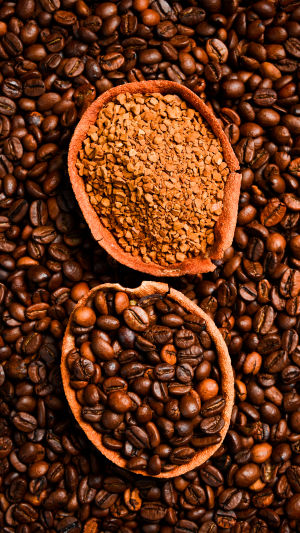Coffee, the world's second most consumed beverage, has a captivating history, dating back to an accidental discovery in the Caffa region of Ethiopia by a shepherd.
This shepherd noticed abnormal excitement in his sheep after consuming fruit from a tree, leading to the accidental discovery of coffee beans. Recognizing its stimulating effects, the head of the abbey crafted a drink from the fruit, enabling him to stay awake during long night prayers.
This discovery spread among monks and beyond, marking the beginnings of coffee consumption.
The evolution of coffee consumption unfolded in three distinct stages. Initially, coffee was a simple and affordable beverage widely accessible to everyone, with little distinction in taste among various types. The second stage saw coffee traders aiming to create blends with harmonious, sweet flavours.
The coffee landscape has become highly specialized in the third and current stage. Each coffee type carries unique origins and stories and offers distinct flavours, with roasting elevated to an art form to unlock the subtle nuances of the coffee bean.
The caffeine content in coffee varies, with a regular cup having more caffeine than an equivalent volume of espresso. A one-ounce espresso typically contains around 40 milligrams of caffeine, compared to approximately ten milligrams per ounce in regular coffee.
However, the caffeine content is proportional to portion size; a 2-ounce double espresso contains 80 milligrams of caffeine, while a 12-ounce cup of coffee has around 120 milligrams.
Two primary coffee varieties dominate the market: arabica and robusta. Robusta, considered lower quality, offers flavours ranging from neutral to bitter and has a higher caffeine content. In contrast, arabica beans exhibit a broader spectrum of flavours, providing a more nuanced taste but demanding more intricate cultivation.
Brazil leads the world in coffee production, followed by Vietnam and Colombia. During the 2017-2018 harvest, Brazil was projected to produce 49.2 million bags weighing 60 kilograms.
The majority of Brazil's coffee production consists of arabica beans. On the consumption front, Finland tops the list with a staggering 12 kilograms per capita per year, followed by Norway and Iceland. According to the International Coffee Organization, the United States holds the 26th position.
Smallholder farmers contribute significantly to the global coffee supply, with around 80% of total production originating from these individuals. Approximately 25 million smallholder farmers worldwide are crucial in sustaining the coffee industry. Some countries, like Brazil and Vietnam, have implemented effective production mechanisms, ensuring a steady supply.
Beyond its rich flavour profile, coffee offers numerous health benefits, potentially contributing to an extended life expectancy. Hot brewed coffee contains high levels of antioxidants and essential nutrients like vitamin B2, magnesium, and potassium.
Studies suggest that coffee may enhance metabolism, promote fat burning, increase energy levels, and reduce the risk of type 2 diabetes, Alzheimer's disease, and certain cancers.
Coffee's journey from an accidental discovery in Ethiopia to a globally beloved beverage mirrors its rich and diverse history. With evolving consumption patterns, varied flavours, and potential health benefits, coffee continues to capture the hearts and palates of millions worldwide.





